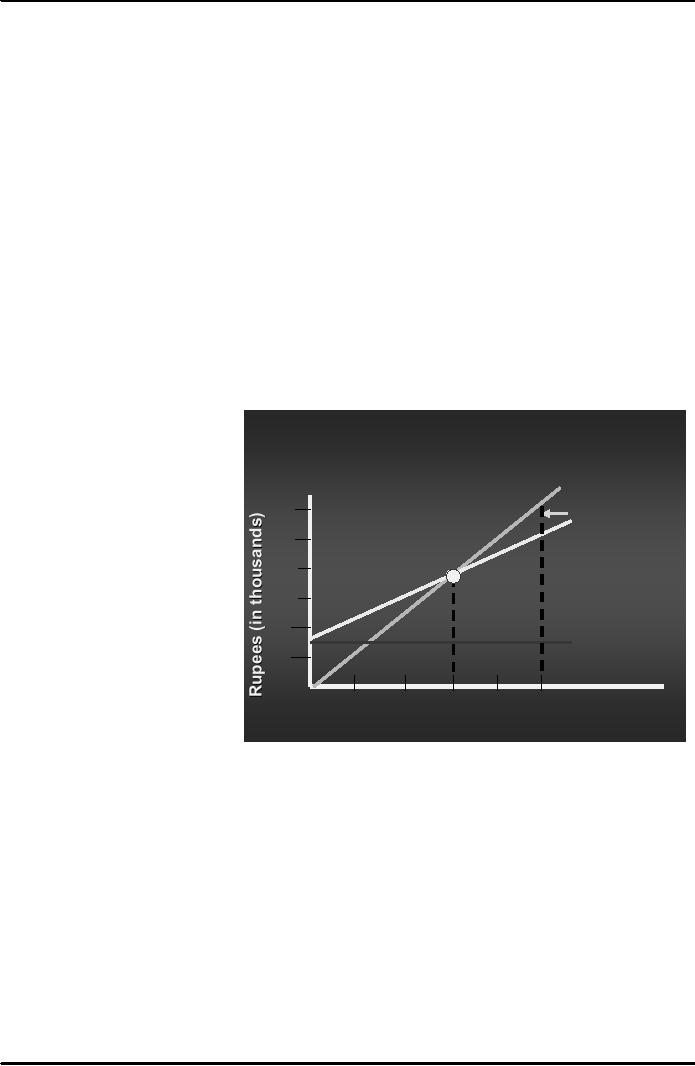 |
A NEW PRODUCT DEVELOPMENT:PRICING STRATEGIES, GLOBAL MARKET PLACE |
| << MARKETING:BCG MATRIX, CONSUMER BEHAVIOR, PRODUCT AND SERVICES |

Principles
of Marketing MGT301
VU
Lesson
45
Learning
objectives:
A.
A
NEW PRODUCT DEVELOPMENT
B.
PRODUCT
LIFE CYCLE STRATEGIES
C.
PRICING
STRATEGIES
D.
PLACING
STRATEGIES
E.
PROMOTION
STRATEGIES
F.
CREATING
COMPETITIVE ADVANTAGE
G.
GLOBAL
MARKET PLACE
H.
MARKETING
AND SOCIETY
A.
New Product Development
Organizations
must develop new products
and services. A company has
to be good at developing
new
products. It also must
manage them in the face of
changing tastes, technologies, and
competition.
As a reason to change, the
company must realize that
products face limited life
spans
and
must be replaced by newer products. In
addition, new products can
fail. The risks of
innovation
can be as great as the
rewards.
The
key to successful innovation is in a
total-company effort, strong
planning, and a
systematic
new-product
development process. The
new-product development process
consists of eight stages:
idea
generation, idea screening, concept
development and testing, marketing
strategy development,
business
analysis, product development,
test marketing, and commercialization. At
each stage, a
decision
must be made as to whether
the idea should be further
developed or dropped. The
company
wants to minimize the chances of
poor ideas moving forward or
good ideas being
rejected.
Each
product has a life cycle
marked by a changing set of problems and
opportunities. The sales
of
a
typical product follow an
S-shaped curve made up of
five stages.
These
stages include:
the
product-development stage
the
introduction stage
the
growth stage
the
maturity stage
and
the decline stage
As
the product passes through
these stages, the marketing
planner must adjust the
organization's
strategies
and be aware of changing problems, threats,
and opportunities. The
planner must adjust
the
firm's marketing mix to these
changes and be able to
predict when significant
changes will
occur.
Managing change is a true
marketing management art and
is necessary for the
organization
to
be successful in the
long-term.
New
Product development Process
1.
Idea Generation
The
first step in the
new-product development process is
idea generation, which is the
systematic
search
for new product ideas.
For every one hundred new
product ideas, only a very
few ever make
it
to commercialization. The search
for these ideas should be
systematic not haphazard.
There are
many
sources for new product
ideas.
Among
the most significant
are:
a.
Internal sources where formal
research and development,
company scientists
and
engineers,
company executives, and
company salespeople can
contribute ideas based
on
their
formal and informal research
and experience.
230

Principles
of Marketing MGT301
VU
b.
Customers can also produce
good new-product ideas
(simply by watching and
listening
to
them). Customers often create
new products and uses on
their own.
c.
Competitors are another
source of new-product ideas. It is a
good idea to watch
competitor's
ads and other communications
to get clues about new
products. In
addition,
the organization can buy
competing products, take
them apart, analyze
the
business
processes used to sell the
product, and then decide
whether to make a similar
product
themselves.
d.
Distributors, suppliers, and
others in the distribution chain
can be sources of
information.
Resellers are close to the
market and can pass along
information about
consumer
problems and new-product possibilities.
Suppliers can tell about
new
concepts,
techniques, and materials that
can be used to develop new
products. Other
sources
can be trade magazines,
trade shows, seminars, government
agencies,
consultants,
university and commercial laboratories,
etc.
I).
The search for new-product
ideas should be systematic
rather than
haphazard.
ii).
Top management can avoid many problems by
adopting an idea
management
system that directs the
flow of new ideas to a
central point where they can
be
collected,
reviewed, and evaluated. The
idea manager:
1].
Helps to create an innovation-oriented
culture.
2].
Yields a larger number of
ideas.
2.
Idea Screening
The
second step in the
new-product development process is
idea screening which
involves
screening
new product ideas in order
to spot good ideas and drop
poor ones as soon as
possible.
Because
product-development costs rise
dramatically in later stages, companies
must proceed only
with
product ideas that will
turn into profitable
products. One way to keep
information organized
is
to have executives write up
new-product ideas on a standard
form that can be reviewed by
a
new-product
committee. A well-designed system
for rating and evaluating
new-product ideas
prevents
problems at latter stages.
3.
Concept Development and
Testing
The
third stage in the process
is concept development and testing.
Concepts may take on
several
forms:
1).
A product idea is an idea
for a possible product that
the company can see itself
on the market.
2).
A product concept is a detailed version
of the new-product idea
stated in meaningful consumer
terms.
3).
A product image is the way consumers
perceive an actual or potential
product.
a.
Concept development involves developing
product ideas into some
alternative
product
concept, finding out how attractive
each concept is to consumers, and
choosing
the best one.
b.
Concept testing involves testing the
concepts with a group of
target consumers to
find
out if the concepts have
strong consumer appeal. Concepts
may be presented
to
consumers either symbolically or
physically. Marketers are always
trying to find
new
ways to make product
concepts more real to concept-test
subjects.
1).
For some concept tests, a
word or picture description might be
sufficient.
2).
Virtual reality tests are
becoming popular.
3).
It is routine to test concepts before
consumers before attempting to turn them
into actual
products.
231

Principles
of Marketing MGT301
VU
4.
Marketing
Strategy Development
a.
The fourth step is marketing
strategy development which
involves designing an
initial
marketing strategy for a new
product based on the product
concept.
b.
A marketing strategy statement should be produced.
This is a statement of the
planned
strategy for a new product
that outlines the intended
target market, the
planned
product positioning, the
sales, market share, and
profit goals for
the
first
few years.
1).
The statement also outlines
the product's planned price,
distribution, and marketing budget
for
the
first year.
2).
Lastly, the marketing strategy statement
describes the planned long-run
sales, profit goals,
and
marketing
mix strategy.
5.
Business
Analysis
The
next step is business
analysis, which is a review of
the sales, costs, and
profit projections for
a
new
product to find out whether
these factors satisfy the company's
objectives. To estimate sales,
the
company should look at the
sales history of similar products
and should survey
market
opinion.
6.
Product
Development
The
sixth step is product
development, which involves developing
the product concept into
a
physical
product in order to ensure
that the product idea
can be turned into a
workable product.
This
step calls for a large
jump in investment.
1).
The R&D department will develop one
or more physical versions of the product
concept and
these
prototypes can take varying
lengths of time to develop.
2).
When ready, these prototypes
must be tested.
3).
The prototype must have
the required functional features
and convey the
intended
psychological
characteristics.
7.
Test
Marketing
The
seventh step is test marketing,
which is the stage at which
the product and
marketing
programs
are introduced into more
realistic marketing settings. Test
marketing lets the marketer
get
experience with marketing the
product.
1).
The basic purpose is to test
the product itself in real
markets.
2).
The amount of test marketing
varies with each new
product.
a).
Not all products are test
marketed.
b).
Simple line extensions and
copies of competitor products
are often
not
test marketed.
3).
The test marketing costs can
be high but they are
often small when compared to
with the costs
of
making a major mistake.
4).
Using test marketing doesn't
guarantee success,
however.
8.
Commercialization
The
eighth and final step in
the new-product development
process is commercialization. This
step
is
introducing a new product
into the market. The company
bringing out a new product
must
make
the following
decisions:
1).
When? When is the time
right (timing) to introduce
the new product?
2).
Where? The company must
decide whether to launch the
new product in a single
location, a
region,
several regions, the
national market, or the inter-national
market. Sometimes a market
rollout
works best where introduction is
phased in. Global rollout
may also be done.
232

Principles
of Marketing MGT301
VU
B.
Product life Cycle
Strategies
After
launching a new
product,
management
hopes it will enjoy a
Sales
and
Profits
($)
long
and
profitable
life.
Management,
however, is also
Sales
aware
of that each product
will
have
a life cycle. The product
life-
cycle
(PLC) is the course of a
Profits
product's
sales and profits over
its
lifetime.
It involves five
distinct
stages:
Time
a.
The
product
Growth
Maturity
Decline
Product
Introduction
development
stage
Development
Stage
begins
when
the
company
finds and
Sales
and Profits Over
develops
a
new-
the
Product's Life
From
Inception
to Demise
product
idea. During
product
development,
sales
are zero and the company's
investment costs
mount.
b.
The
introduction stage is a period of slow
sales growth as the product
is being
introduced
in the market. Profits are
nonexistent in this stage
because of heavy
expenses
of product introduction.
c.
The
growth stage is a period of rapid market
acceptance and increasing
profits.
d.
The
maturity stage is a period of slowdown in
sales growth because the
product has
achieved
acceptance by most potential buyers.
Profits level off or decline
because of
increased
marketing outlays to defend the
product against
competition.
e.
The
decline stage is the period
when sales fall off
and profits drop.
1.
Introduction
Stage
Because
the product-development stage of
the PLC was examined at the
beginning of the chapter,
the
first stage to explore in
more detail at this point is
the introduction stage. This
stage is when
the
product is new and first
distributed and made
available for
purchase.
a.
In
this stage, profits are
negative or low because of
the low sales and
high
distribution
expenses.
b.
Prices
tend to be on the high side
because of low output,
production problems,
high
promotion, and other
expenses.
c.
There
are usually few
competitors.
d.
The
focus is on buyers who are
the most ready to
buy.
e.
The
market pioneer must launch its product
with a strategy that is
consistent
with
a long-term focus on the market
rather than a quick profit
gain. Retaining
market
leadership may be difficult,
but is desirable.
2.
Growth
Stage
The
growth stage is the product
life-cycle stage during
which a product's sales start
climbing
quickly.
a.
Early
adopters will continue
buying and later buyers will start
following their lead.
b.
New
competitors may enter the
market and introduce new
product features.
c.
The
market will expand.
d.
Prices
will remain where they are or
fall only slightly.
233

Principles
of Marketing MGT301
VU
e.
Companies
keep their promotion
spending at the same or at a
slightly higher
level.
f.
Educating
the market remains a goal,
but the company must
also meet the
competition.
g.
Profits
increase.
h.
The
firm faces a trade-off
between high market share
and high current
profit.
3.
Maturity
Stage
The
maturity stage is that stage
in the product life cycle
where sales growth slows or
levels off.
Product
managers may have to do more
than simply defend their
products. Most products are
in
their
maturity stage, and
therefore, management has
the most experience with
this stage.
a.
Market
modification is an approach in which
the company tries to
increase the
consumption
of the current product. It
looks for new users
and market segments.
It
tries to increase usage among
present customers. It may also
reposition the
brand
to appeal to a larger or faster-growing
segment.
b.
Product
modification is an approach to change
product characteristics. This
can
be
accomplished by quality improvement,
feature improvement, or style
improvement.
c.
Marketing
mix modification is an approach in
which the product manager
tries to
improve
sales by changing one or more marketing
mix elements.
4.
Decline
Stage
The
decline stage is the stage
in the product life cycle in
which a product's
sales
decline.
This
can
occur for several
reasons:
a.
Technological advances.
b.
Shifts in consumer tastes.
c.
Increased competition.
Firms
must be aware that carrying a
weak product past its useful
life can be very
costly
to the
firm
in many ways. Companies need
to pay more attention to
their aging products.
Decisions that
need
to be made are:
a.
The
firms may decide to maintain
a brand without change in
the hope that
competitors
will leave the
industry.
b.
Managers
may decide to harvest the
product (which means reducing various
costs
and
hoping that sales hold
up).
c.
Managers
may decide to drop the
product from the line
(sell it or liquidate it at
salvage
value).
C.
Price
"The
amount of money charged for a product or
service, or the sum of the values
that
consumers
exchange for the benefits of having or using the
product or service".
Price
goes by many names in our
economy. In the narrowest
sense, price is the amount
of money
charged
for a product or service.
This meaning, however, has
been broadened. Today,
despite the
increased
role of non-price factors in
the modern marketing process,
price remains an
important
element
in the marketing mix.
Many
internal and external factors
influence the company's pricing
decision. Internal factors
include
the firm's marketing objectives, marketing
mix strategy, costs, and organizational
factors.
External
factors that influence
pricing decisions include
the nature of market and
demand,
competition,
and other environmental
factors like the economy,
reseller needs, and
government
actions.
In the end, the consumer
decides whether the company
has set the right
price. The
234

Principles
of Marketing MGT301
VU
consumer
weighs the price against
the perceived value of using the
product. If the price
exceeds
the
sum of the value, consumers
will not buy the
product. Consumers differ in
the values they
assign
to different product features
and marketers often vary
their pricing strategies for
different
price
segments.
Because
pricing is a dynamic process, companies
must design a pricing
structure that covers
all
their
products and a variety of
constantly changing conditions (such as
changes that occur as
the
product
progresses through the
stages of the product life
cycle).
The
marketer wishing to explore pricing
strategy options will find a
wealth of alternatives from
which
to choose. The first major
option will be pricing with
respect to the product mix.
Numerous
forms
of product-mix pricing strategies
are examined within the
context of the
competitive
environment.
Examples include product-line pricing,
optional-product pricing,
captive-product
pricing,
by-product pricing, and
product-bundle pricing. The
average marketer does not
use all of
these
methods; however, by studying the
options available, the marketer
enhances his or her
ability
to
be creative with respect to
pricing within the context
of the product mix.
Sometimes,
however, the firm must
make adjustments in their pricing
process and strategy.
These
adjustments
are made to account for
differences in consumer segments and changing
situations.
Adjustments
can occur through discounts
and allowances or by the
desire to segment markets
by
price.
Additionally, price has a psychological
aspect that allows for adjustments
just as
geographical,
promotional, and international
relationships can alter pricing methods
and strategies.
Break-Even
Analysis
Break-even
pricing (target profit
pricing)
is an approach to
setting
price to
break-
Total
revenue
even
on the cost of making
and
Target
profit
1200
marketing
products or to make
Total
cost
1000
the
target
(desired)
Break-even
point
profit
It uses a break-even
chart
800
that
shows the total cost
and
600
total
revenue at different levels
400
of
sales volume.
Fixed
cost
a.
Although
200
break-even
analysis
and
0
10
20
30
40
50
target
profit
Sales
volume in units
(thousands)
pricing
can
help
the company to determine minimum
prices needed to cover
expected costs
and
profits, they do not take
the price-demand relationship
into account.
b.
When
using this method, the
company must also consider
the impact of price on
the
sales volume needed to
realize target profits and
the likelihood that
the
needed
volume will be achieved at
each possible price.
D.
Place
Distribution
channels have been identified as
being a set of independent organizations
involved in
the
process of making a product or service
available for use or
consumption by the consumer or
business
user. Making decisions involving
distribution channels are among the
most complex and
challenging
decisions facing the firm. Each
channel system (and there
can be several) creates
a
different
level of sales and costs.
Unlike flexible elements of
the marketing mix (price decisions
for
example),
once a distribution channel
has been chosen, the
firm must usually stick with
their
choice
for some time. In addition,
the chosen channel strongly
affects, and is affected by, the
other
elements
in the marketing mix.
235

Principles
of Marketing MGT301
VU
A
strategic planner limits
their options if they
consider
only one channel choice. Each
firm
needs
to identify alternative ways to reach
its
market.
There are many means
available. Some
Manufacturer
Customer
of
the choices include the
range of direct
selling
to multiple intermediary levels
(which
Manufacturer
Customer
may
involve several distribution
relationships).
Each
of these options has
advantages and
Manufacturer
Customer
disadvantages
associated with them.
Vertical
Manufacturer
and
horizontal systems are more
sophisticated
Customer
than
the basic channel alternatives
and each is
Manufacturer
explained
in context with contemporary
usage.
E-commerce
and the use of the
Internet have
20
Contacts
also
impacted channel choice and
strategy in a
profound
way.
Channel
design begins with assessing
customer
channel-service
needs and company
channel
Manufacturer
Customer
objectives
and constraints. The company
then
identifies
the major channel alternatives in
terms
Manufacturer
Customer
of
the types of intermediaries,
the number of
Wholesaling
Manufacturer
intermediaries,
and the channel
responsibilities of
Intermediary
Customer
each.
No system, no matter how
well it has been
Manufacturer
planned,
is without conflict. If quality
service and
Customer
Manufacturer
low
cost is to be delivered, management
of
distribution
conflict is a necessity.
Because
9
Contacts
distribution
relationships tend to be long-term
in
nature,
the choice of channel partners is
very
important
and should be taken very
seriously.
In
today's global marketplace, selling a product is
sometimes easier than getting it to
customers.
Therefore,
marketing logistics and supply chain
management is receiving increased
attention from
strategic
planners. The task of marketing logistics
systems is to minimize the
total cost of
providing
a
desired level of customer services
although bringing those services to
the customer with the
maximum
amount of speed. Major
logistics functions of warehousing;
inventory management,
transportation,
and logistics information
management are discussed and
explored.
Retailing
and Wholesaling
Retailing
and wholesaling consist of many
organizations bringing goods and
services from the
point
of production to the point of
use. Retailing by definition includes all
the activities involved in
selling
goods and services directly
to final consumers for their
personal, non-business use.
Retailers
can
be classified as store retailers
and non store retailers.
Store retailers can be
further classified by
the
amount of service they
provide, the product line
sold, relative prices charged, and
retail
organization
format (control of outlets). Non
store retailers are
described as being in direct
marketing,
catalogs, telephone, home TV shopping
shows, home and office
parties, door-to-door
contact,
automatic vending, online services
and the Internet, and
other direct retailing approaches.
Retailing
decisions involve the
constant search for new
marketing strategies to attract and
hold
customers.
Considerations are the
target market and positioning
decision, the product
assortment
and
services decision, the price
decision, the promotion
decision, and the place
decision. All of
236

Principles
of Marketing MGT301
VU
these
decisions are examined closely in
the chapter. Numerous
examples provide explanations of
several
options that are available
in all the aforementioned
areas.
Retailers
operate in a harsh and fast-changing
environment, which offers threats as
well as
opportunities.
New retail forms continue to
emerge to meet new situations
and consumer needs,
but
the life cycle of new retail
forms is getting shorter. In addition to
the traditional forms
of
retailing,
consumers now have an array of
nontraditional alternatives to choose
from including mail
order,
television, phone, and online shopping.
The last major trend
that seems to be of interest to
business
strategists and marketers is
the rise of huge mass
merchandisers and specialty
superstores.
These
forms will have a pronounced
effect on the way retailing is conducted
in the future.
Wholesaling,
unlike retailing, deals with
the sale of goods and
services that will be resold
by and/or
used
by the business customer itself.
One way to study and understand
wholesaling is to examine
the
functions that are performed
by the wholesalers. These
functions include selling
and
promoting,
buying and assortment building,
bulk-breaking, warehousing, transportation,
financing,
risk
bearing, supplying market information,
performing management services,
and providing advice
for
customers. Wholesalers can be divided
into numerous groups. Three
primary types of
wholesalers
are merchant wholesalers,
agents and brokers, and
manufacturer and retailer
sales
branches
and offices. Each of these general
types (and their numerous subdivisions)
are explained
and
detailed.
E.
Promotion
Modern
marketing calls for more
than just developing a good
product, pricing it attractively,
and
making
it available to target customers. Companies
must also communicate with
their customers
and
there should be controlled
direction to those communications.
Promotion provides the
primary
communication function. As one of the
four major elements of the
marketing mix,
promotion
uses advertising, sales promotion,
public relations, personal selling, and
direct
marketing
to achieve the company's communication
objectives.
During
the past several decades,
companies around the world
have perfected the art of
mass
marketing.
The companies must recognize
that the face of marketing
communications is constantly
changing
and, to be effective in the
future, the marketer must learn to
utilize the new
emerging
communication
techniques. The growth and
challenges of the electronic
promotional
communication
form are great. The
use of computer technology, a
desire to get close to
the
consumer,
and an increased use of direct marketing
databases has set the
stage for increased
integrated
marketing communications. Under this
concept, the company carefully
integrates and
coordinates
its many communication channels--mass
media advertising, personal selling,
sales
promotion,
public relations, direct marketing, packaging,
and others--to deliver a
clear, consistent,
and
compelling message about the
organization and its products.
Integrated marketing
communications
produce better communications consistency
and greater sales
impact.
Integrated
marketing communications involves
identifying the target
audience and shaping a
well-
coordinated
promotional program to elicit the
desired audience response. Too
often, marketing
communications
focus on overcoming immediate
awareness, image, or preference problems
rather
than
managing the customer
relationship over
time.
Building
on the aforementioned communications
model, describes the steps
in developing
effective
communication. One of the
most important decisions to be
made by the organization
is
how
much to spend on promotion.
This discusses several
approaches to the organization of
a
promotional
budget and a mix of tools to accomplish
the organization's promotional
objectives.
There
are various strategies that
can be considered by the
promotional planner. The
primary
strategies
of push and pull are
described. In addition, the
buyer-readiness stage and
the product
life-cycle
stage are also
considered.
Three
of the promotional mix
elements (advertising, sales promotion,
and public relations)
are
mass
communication tools. Advertising is
described as being any paid
form of non-personal
presentation
and promotion of ideas,
goods, and services by an
identified sponsor. There
are four
237

Principles
of Marketing MGT301
VU
important
decisions to be accomplished as the
marketer attempts to organize and direct
the
advertising
function. Each of these decisions
(setting objectives, budget decisions,
advertising
strategy
[message decisions and media
decisions], and evaluating advertising
campaigns) is
discussed
in detail and explained
within the context of
building an advertising campaign.
In
addition,
several forms of advertising, various advertising
strategies, and descriptions of the
mass
media
are presented to the reader.
The marketing firm can undertake
the advertising function
themselves
or they can contract with an
advertising agency to accomplish their
advertising
objective,
planning, and
implementation.
Sales
promotion is a process of providing
short-term incentives to encourage
purchase or sales of a
product
or service. Sales promotion
offers the buyer reasons to
buy now. In addition,
sales
promotion
is also intended to stimulate reseller
effectiveness. Sales promotion
has grown rapidly in
the
recent past because of pressure to
increase sales, increased
competition, and the
declining
efficiency
of the other mass
communication methods.
Public
relations, the final mass
communication tool described in
this chapter, is an attempt to
build
good
relations with the company's various publics by
obtaining favorable publicity,
building up a
good
"corporate image," and
handling or heading off
unfavorable rumors, stories, or events.
The
organization
has a variety of tools at
their disposal for accomplishing
this feat. One of the
overriding
tasks of public relations is to control
the exposure and
relationship with the mass
media.
By
focusing on consumer attitudes, awareness,
and knowledge of the organization,
the company is
better
prepared to succeed. Public relations
has even been extended to
the Internet and
companies
are
beginning explore ways to increase its
effect in the newly emerging
world of e-commerce.
Advertising
A
paid form of non-personal
communication about an organization
and/or its products to a
target
audience
through a mass
medium.
Personal
Selling
A
paid form of non-personal
communication about an organization
and/or its products to a
target
audience
through a mass
medium.
Sales
Promotion
Demand-stimulating
activity designed to supplement
advertising and facilitate personal
selling.
Public
Relations
A
planned communication effort by an
organization to contribute to generally
favorable attitudes
and
opinions toward an organization
and its products.
Direct
Marketing
Direct
connections with carefully
targeted individual consumers to obtain
an immediate response
and
cultivate lasting customer
relationship
F.
Creating Competitive
Advantage
Two
key trends in marketing for
the twenty-first century
are: (a) the trend
toward the use of
relationship
marketing to improve customer satisfaction;
and (b) the trend
toward in-depth
competitor
analysis as a means of identifying
the company's major competitors (using
both an
industry
and market-based analysis)
and closely examining and formulating
strategies to deal
with
competitors'
objectives, strategies, strengths and
weaknesses, and reaction patterns.
To
be successful, a company must
consider its competitors as well as its
actual and potential
customers.
In the process of performing a
competitor analysis, the
company carefully analyzes
and
gathers
information on competitors' strategies
and programs. A competitive intelligence
system
helps
the company acquire and
manage competitive information.
The company must then
choose
a
competitive marketing strategy of its
own. The strategy chosen
depends on the company's
industry
position and its objectives,
opportunities, and resources.
Several basic
competitive
strategies
are outlined in the chapter.
Some of these are time-tested
and some are relatively
new.
The
first is that of the market
leader which faces three
challenges: expanding the total
market,
protecting
market share, and expanding market share.
The market leader is interested in
finding
238

Principles
of Marketing MGT301
VU
ways
to expand the total market
because it will benefit most
from any increased sales.
The leader
must
also have an eye toward
protecting its share. Several
strategies for accomplishing
this
protection
task are presented.
Aggressive leaders also try
to expand their own market
share. The
second
position is that of the market
challenger. This is a firm that
aggressively tries to expand
its
market
share by attacking the leader,
other runner-up firms, or smaller
firms in the industry.
The
third
position is that of the market
follower which is designated as a
runner-up firm that
chooses
not
to rock the boat (usually
out of fear that it stands
to lose more than it might
gain). Lastly, the
market
niche is a position option open to
smaller firms that serve
some part of the market that
is
not
likely to attract the
attention of the larger
firms. These firms often
survive by being
specialists
in
some function that is attractive to
the marketplace. The
competitive analysis of the
four
competitive
position options presented.
This information can be used
by every mid-level strategic
planner
who seeks insight into
competitive strategy
dynamics.
G.
Global Market
Place
The
world is shrinking rapidly
with the advent of faster
communication, transportation,
and
financial
flows. In the twenty-first
century, firms can no longer
afford to pay attention only
to their
domestic
market, no matter how large it
is. Many industries are global
industries, and those firms
that
operate globally achieve
lower costs and higher
brand awareness. At the same
time, global
marketing
is risky because of variable
exchange rates, unstable governments,
protectionist tariffs
and
trade barriers, and other
prohibitive factors.
Given
the potential gains and
risks of global marketing, companies need
a systematic way to make
their
international marketing decisions. Decision
areas that must be addressed
are: (1) How to look
at
the global market environment; (2) Deciding
whether to go international; (3) Deciding
which
markets
to enter; (4) Deciding how to enter the
market; (5) Deciding on the global marketing
program;
and, (6) Deciding on the global marketing
organization. Each of these decisions
must be
seriously
considered and answered if
success is to be achieved in the
international competitive
arena.
All markets and industrial
bases around the world
are not the same.
There are varying
degrees
of economic sophistication. The marketer must
make plans for operations in
subsistence
economies,
raw-material-exporting economies,
industrializing economies, and
established industrial
economies
separately if true marketing success is
to be achieved. It would be easier on
the decision
maker
if all the economies were
like the United States.
They, however, are not.
Global marketing
requires
an extensive amount of learning and, in
some instances, adaptation of the
marketing mix
to
fit the particular situation
and economy.
In
addition to global challenges with
consideration of the marketing mix, the
marketer that wishes
to
go global must also consider a
variety of options on how to align
the organization with
international
partners. These considerations are
different than those that
the marketer faces in its
own
domestic environment. The
end result of making these
new global decisions is not
only
improvement
in marketing skills, but improvement
toward attaining a truly global
organization.
H.
Marketing and
Society
In
working to meet the consumer's
needs, marketers may take
some actions that are
not approved
of
by all the consumers or publics
within the social sector.
Marketing managers must
understand
the
criticism that the marketing
function may encounter. By
understanding the criticism,
the
manager
is better prepared to respond to it in a proactive
manner. Some of the
criticism is justified;
some
is not.
The
primary criticisms of the marketing
function with respect to the
impact on individual
consumers
have been categorized as
being: (1) high prices; (2)
deceptive practices; (3)
high-
pressure
selling; (4) shoddy or unsafe products; (5) planned
obsolescence; and (6) poor
service to
disadvantaged
consumers. These criticisms have come
from a failure to meet
individual consumer
welfare
needs.
239

Principles
of Marketing MGT301
VU
A
separate set of criticisms is directed
toward the marketing function by
society in general.
Criticism
from this larger public
body includes comments on creating: (1)
false wants and too
much
materialism; (2) too few social
goods; (3) cultural pollution;
and (4) too much
political
power.
In addition, critics have also
pointed out that marketing's impact on
businesses may not be
good
either. Marketing is accused of
harming competitors and reducing
competition by acquisition
of
competitors, creating barriers to
entry, and using unfair marketing
practices.
Concerns
about the marketing function
have led action groups to
participate in consumer and
environmental
movements and to form
protest organizations. Marketing's
response to action
groups
and social criticism has
largely been positive and proactive. Many
companies that were
originally
opposed to social movements
and legislation that was
created to address consumer
complaints
have now recognized a need
for positive consumer information, education,
and
protection.
THE
END
240
Table of Contents:
- PRINCIPLES OF MARKETING:Introduction of Marketing, How is Marketing Done?
- ROAD MAP:UNDERSTANDING MARKETING AND MARKETING PROCESS
- MARKETING FUNCTIONS:CUSTOMER RELATIONSHIP MANAGEMENT
- MARKETING IN HISTORICAL PERSPECTIVE AND EVOLUTION OF MARKETING:End of the Mass Market
- MARKETING CHALLENGES IN THE 21st CENTURY:Connections with Customers
- STRATEGIC PLANNING AND MARKETING PROCESS:Setting Company Objectives and Goals
- PORTFOLIO ANALYSIS:MARKETING PROCESS,Marketing Strategy Planning Process
- MARKETING PROCESS:Analyzing marketing opportunities, Contents of Marketing Plan
- MARKETING ENVIRONMENT:The Company’s Microenvironment, Customers
- MARKETING MACRO ENVIRONMENT:Demographic Environment, Cultural Environment
- ANALYZING MARKETING OPPORTUNITIES AND DEVELOPING STRATEGIES:MIS, Marketing Research
- THE MARKETING RESEARCH PROCESS:Developing the Research Plan, Research Approaches
- THE MARKETING RESEARCH PROCESS (Continued):CONSUMER MARKET
- CONSUMER BUYING BEHAVIOR:Model of consumer behavior, Cultural Factors
- CONSUMER BUYING BEHAVIOR (CONTINUED):Personal Factors, Psychological Factors
- BUSINESS MARKETS AND BUYING BEHAVIOR:Market structure and demand
- MARKET SEGMENTATION:Steps in Target Marketing, Mass Marketing
- MARKET SEGMENTATION (CONTINUED):Market Targeting, How Many Differences to Promote
- Product:Marketing Mix, Levels of Product and Services, Consumer Products
- PRODUCT:Individual product decisions, Product Attributes, Branding
- PRODUCT:NEW PRODUCT DEVELOPMENT PROCESS, Idea generation, Test Marketing
- NEW PRODUCT DEVELOPMENT:PRODUCT LIFE- CYCLE STAGES AND STRATEGIES
- KEY TERMS:New-product development, Idea generation, Product development
- Price the 2nd P of Marketing Mix:Marketing Objectives, Costs, The Market and Demand
- PRICE THE 2ND P OF MARKETING MIX:General Pricing Approaches, Fixed Cost
- PRICE THE 2ND P OF MARKETING MIX:Discount and Allowance Pricing, Segmented Pricing
- PRICE THE 2ND P OF MARKETING MIX:Price Changes, Initiating Price Increases
- PLACE- THE 3RD P OF MARKETING MIX:Marketing Channel, Channel Behavior
- LOGISTIC MANAGEMENT:Push Versus Pull Strategy, Goals of the Logistics System
- RETAILING AND WHOLESALING:Customer Service, Product Line, Discount Stores
- KEY TERMS:Distribution channel, Franchise organization, Distribution center
- PROMOTION THE 4TH P OF MARKETING MIX:Integrated Marketing Communications
- ADVERTISING:The Five M’s of Advertising, Advertising decisions
- ADVERTISING:SALES PROMOTION, Evaluating Advertising, Sales Promotion
- PERSONAL SELLING:The Role of the Sales Force, Builds Relationships
- SALES FORCE MANAGEMENT:Managing the Sales Force, Compensating Salespeople
- SALES FORCE MANAGEMENT:DIRECT MARKETING, Forms of Direct Marketing
- DIRECT MARKETING:PUBLIC RELATIONS, Major Public Relations Decisions
- KEY TERMS:Public relations, Advertising, Catalog Marketing
- CREATING COMPETITIVE ADVANTAGE:Competitor Analysis, Competitive Strategies
- GLOBAL MARKETING:International Trade System, Economic Environment
- E-MARKETING:Internet Marketing, Electronic Commerce, Basic-Forms
- MARKETING AND SOCIETY:Social Criticisms of Marketing, Marketing Ethics
- MARKETING:BCG MATRIX, CONSUMER BEHAVIOR, PRODUCT AND SERVICES
- A NEW PRODUCT DEVELOPMENT:PRICING STRATEGIES, GLOBAL MARKET PLACE